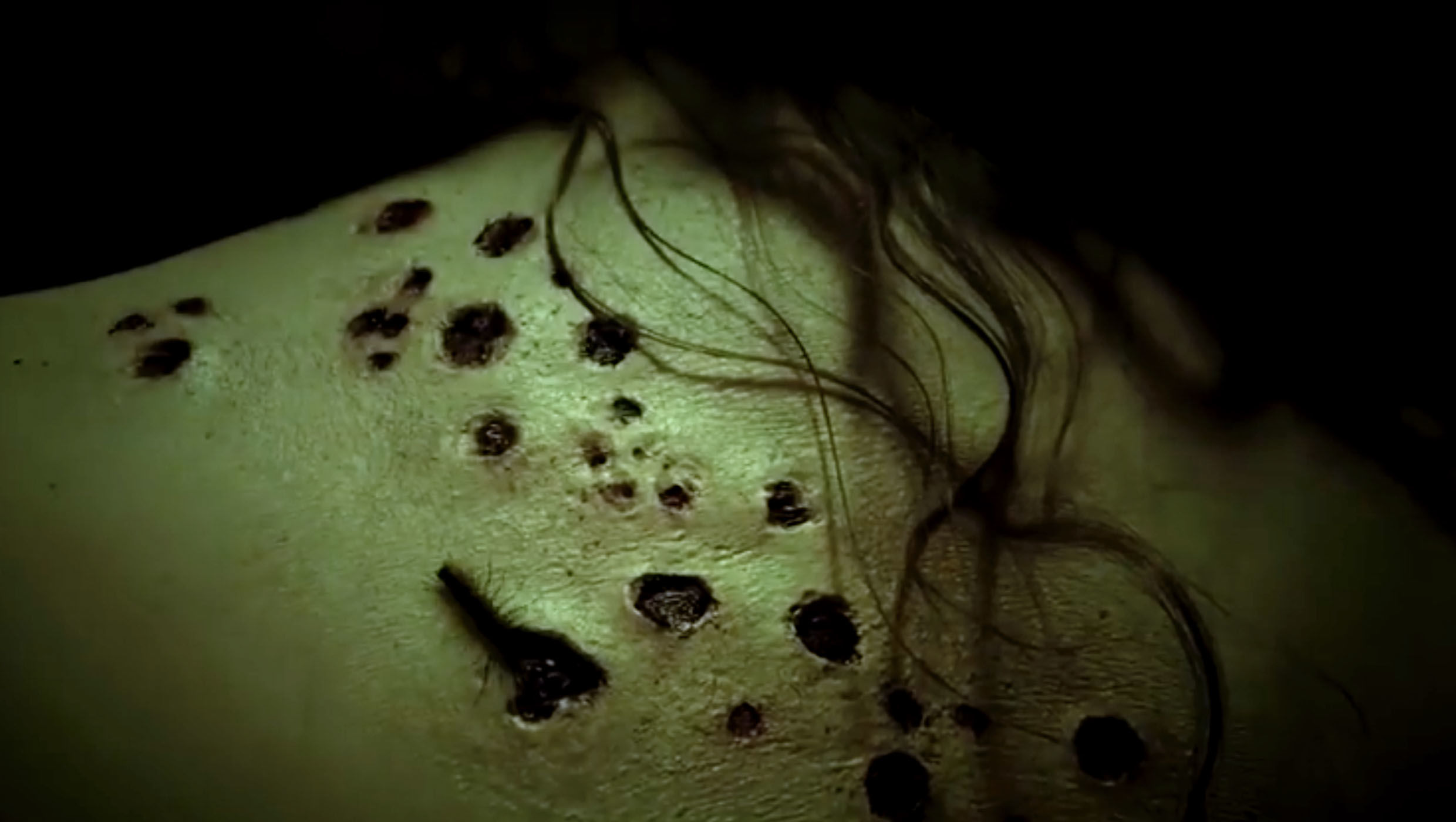Create a free profile to get unlimited access to exclusive videos, sweepstakes, and more!
Trypophobia goes much deeper than a fear of holes, and it will have you writhing in disgust

Remember Sarah Paulson’s character Ally from American Horror Story: Cult and her crippling fear of holes, like the piece of coral in her psychiatrist’s office?
You would probably think Ally should have been more afraid of all the clowns in that season. Trypophobia literally translates to “fear of holes,” but a recent study has found that trypophobics actually showed more disgust toward images of things like coral and sponges and the new iPhone 11 than the fear response that might have been expected. Even people who didn’t think they had the phobia cringed. Turns out it isn’t just the holes themselves that trigger this response, but something much more … disgusting.
“It is unclear why the condition exists, given the harmless nature of typical eliciting stimuli,” psychologists Tom R. Kupfer and An Le said in a study published in Cognition and Emotion. “We suggest that aversion to clusters is an evolutionarily prepared response towards a class of stimuli that resemble cues to the presence of parasites and infectious disease.”
Think about it. Fear is a fight-or-flight response that is switched on when we are exposed to something, like a highly venomous spider, that could seriously harm us (or that we perceive could do harm). There’s a reason arachnophobia has crawled into so many creepy movies. Fear can also be a response to things we may have had a particularly terrible experience. You can get why a fear of dogs that started when the phobic person was bitten by the neighbors’ Rottweiler as a kid, but holes? They apparently do nothing more than silently terrorize the observer. This is why trypophobia has been so difficult to understand.
Psychologist Stella Lourenco believes trypophobia is a loathing that goes much deeper than the holes that set it off. She and her colleagues studied patients’ pupils as they subconsciously reacted to images of dangerous creatures, trypophobic images, and neutral images of things like coffee beans or butterflies. The subjects’ pupils expanded in a typical fight-or-flight response when they landed on a spider or snake, but actually shrank when they faced nightmarish visions of holes. This is known as the rest-and-digest response and indicates stimulation of the parasympathetic nervous system, which has control over the body at rest and pretty much never sleeps. Fear can’t stimulate it — but disgust can.
“Whereas snakes and spiders are known to elicit a fear reaction, associated with the sympathetic nervous system, anecdotal reports from self-described trypophobes suggest reactions more consistent with disgust, which is associated with activation of the parasympathetic nervous system,” Lourenco said in the study, published in PubMed.
Though Lourenco describes the phobia as “the fear of an innocuous cluster of holes,” a scene out of AHS: Cult might give you a better understanding of how trypophobes see them. Ally’s aversion to holes really flared when she was examining her pores in the mirror, and suddenly she felt an overwhelming itch take over her neck. What is supposed to be a rash to the rest of the world is reflected as a zombie-ish epidermis infested with gaping sores that just keep expanding more and more as she scratches. Cut to her pychiatrist’s office, and you can see there are no sores on Ally’s neck. She completely imagined them.
Sores like the hallucinations in the mirror can be a symptom of potentially fatal diseases. It’s legit fear of these diseases that make some people freak out at the sight of holes, even if they aren’t seeing things like Ally. This could have been a lifesaving mechanism when diseases like smallpox and the plague ran rampant. Though modern medicine has virtually eradicated those, that same disgust can drive someone away from anything that could be contaminated by other germs almost as gnarly.
“Disgust … may instead allow for the avoidance of sources of disease such as rotten food or the visibly sick,” Lourenco said. “It has been suggested that a trypophobic reaction may be an extension of an intrinsic disgust for decomposing items, sores and scars.”
So holes are actually not scary to trypophobes, but disgusting, and that disgust could be partially responsible for human survival. Horror TV shows just won’t tell you that.
(via New Scientist)














